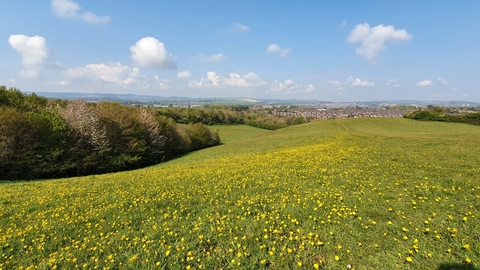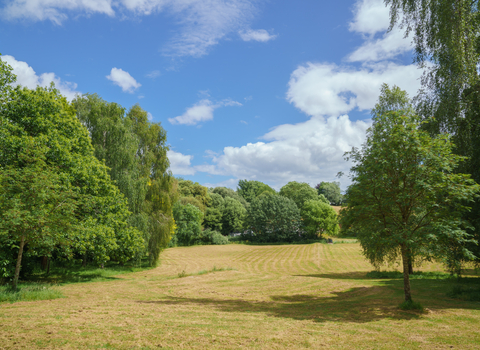
Ludwell Valley Park
Location
Know before you go
Dogs
When to visit
Opening times
AlwaysBest time to visit
Any timeAbout the reserve
Ludwell is one of six Exeter Valley Parks managed by Devon Wildlife Trust.
The park is a working farm on the edge of the busy city of Exeter. Many of the fields provide free access to people wishing to enjoy this tranquil setting.
Next to the farmland is Wonford Playing Fields where there is space to kick a ball around, jog or take a leisurely stroll beside the Northbrook. The valley is a real wildlife haven. Harvest mice nest in the fields, whitethroats and blackcaps skulk in the hedgerows and orange-tip and painted lady butterflies feed on the wildflowers.
Visiting Ludwell Valley Park
Access is from Ludwell Lane, Topsham Road, Parkland Drive and Pynes Hill. There is a range of circular walks.
- Bus stops along Topsham Road and Rifford Road
- Car parking at Pynes Hill and on local roads
- A cycle ride or pleasant walk from the Riverside Valley Park
Scroll down to find and download your free map and guide to Ludwell Valley Park.
Ash dieback
The disease ash dieback is now widespread in the UK and is present at many of our nature reserves, so we carry out tree felling across our sites in winter months. For your own safety please observe temporary path diversions and closures.
Where possible we will leave affected ash trees in place to decay naturally as an important habitat for wildlife. We plan to only fell diseased ash trees which pose a threat to people or infrastructure. Before trees are felled, we will check whether any rare or protected wildlife is present. If it is, we will postpone or avoid felling these trees. No felling will take place during the bird nesting season.
DWT’s Saving Devon’s Treescapes project are working with communities, landowners and businesses to help make Devon's precious treescapes more resilient in the face of ash dieback. Find out how you can get involved here.
NOTICE: If you are visiting our reserves, please note that there have been instances of H5N1 Avian bird flu found in birds in Devon. There is very low risk to public health, but we do ask that if you come across any unusual or unexplained bird deaths on or near our reserves, please do not touch them and avoid allowing your dog to come into contact with dead birds. Please report them to Defra here or call 03459 335577 and also report your findings to DWT by email at contactus@devonwildlifetrust.org.
Species
Contact us
Download your free map and guide to exploring Ludwell Valley Park
Click here to watch an introduction to Ludwell Valley Park
Site Improvements
We are incredibly grateful to Viridor Credits for awarding £48,692 of funding to improve various habitats in Ludwell Valley Park.
The completed project has harrowed and re-seeded nearly nine hectares across six fields with a wildflower mix that should look spectacular in years to come.
There are now also 1,430 metres of hedgerows traditionally laid in the Devon ‘steeping’ style, seven traditional variety cherry trees planted with guards, and three traditional variety apple trees planted in the various orchards.
Contractors have also excavated a large wildlife-friendly pond in the valley, the spoil from which has been used to build a Devon hedge bank that has had native whips (small trees) planted along its length.
The final element was removal of deteriorated fencing to install 1,700 metres of new fencing around the fields seeded with native wildflowers. This will protect laid hedges, and allow vital hay meadow cutting and cattle/grazing regimes to be implemented.
------
Summer 2024
Ludwell Valley Park has received five new kiss-gates, to replace smaller ones, kindly funded by The Clare Milne Trust. Each entrance also now has a 4ft side gate which will be open when there aren't cattle grazing, helping improve access for buggies, wheelchairs and cycles. The areas were chosen for their proximity to roads with public parking, and are on a flat ridge line, forming a chain of better access links to the park!










